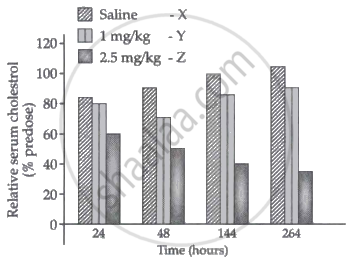Advertisements
Advertisements
Question
Golden rice is ______.
Options
A variety of rice grown along to yellow rives of china
Long stored rice having yellow colour tint
A transgenic rice having gene for B-carotene
Wide variety of rice with yellow coloured grains
Solution
Golden rice is a transgenic rice having gene for B-carotene.
Explanation:
Golden rice is a crop that has been genetically modified to have a higher nutritional value. It is high in vitamin A and contains the '13 carotene' gene from the daffodil plant as well as a gene from some bacteria. Golden rice protects juvenile blindness caused by vitamin A deficiency.
APPEARS IN
RELATED QUESTIONS
Maize grain is a fruit known as ______.
Bt Cotton is resistant to ______.
Which one of the followmg bacterium is used for the production of transgenic plants?
In RNAi genes are silenced using ______.
Bt toxin obtained from ______.
Golden Rice:
A. GM rice
B. Rich in Vit A
C. Prevents blindness
D. Bruise resistant
Silencing of a gene could be achieved through the use of ______.
Highlight any four areas where genetic modification of plants has been useful.
Insects in the Lepidopteran group lay eggs on maize crops. The larvae on hatching feed on maize leaf and tender cob. In order to arrest the spread of three such Lepidopteran pests, Bt maize crops were introduced in an experimental field.
A study was carried out to see which of the three species of lepidopteran pests was most susceptible to Bt genes and its product.
The lepidopteran pests were allowed to feed on the same Bt-maize crops grown on 5 fields (A-E).
The graph below shows the leaf area damaged by these three pests after feeding on maize leaves for five days.

Key for lepidopteran insect pest species
 |
Species I |
 |
Species II |
 |
Species III |
Insect gut pH was recorded as 10, 8 and 6 respectively for Species I, II and III respectively.
(a) Evaluate the efficacy of the Bt crop on the feeding habits of the three species of stem borer and suggest which species is least susceptible to Bt toxin.
(b) Which species is most susceptible to Bt-maize, and explain why?
(c) Using the given information, suggest why a similar effect was not seen in the three insect species.
|
RNA interference (RNAi) holds great potential as a therapeutic agent for the treatment of human diseases and as biocontrol agents in controlling pests in the field agriculture. An experiment was carried to study the use of 'RNAi' for the potential treatment of disorders of cholesterol metabolism. Some people possess genetic mutations with elevated levels of ApoB gene which predisposes them to coronary artery diseases. Lowering the amount ApoB can reduce the number of lipoproteins and lower the blood cholesterol. Tracy Zimmerman and her colleagues used RNAi in 2006 to reduce the level of ApoB in non human primates Cynomolgus monkeys. One group of monkeys were given RNAi treatment (small interfering RNAs, SiRNAs) (doses 1 mg/kg, SiRNAs), second group of monkeys were given RNAi treatment (doses 2.5 mg/kg, SiRNAs) and third group of monkeys were injected with saline. |
The results of the study are depicted in the graph below:

- How does the treatment with 2.5 mg/kg bring an effect on cholesterol metabolism when compared from 24 hours and 144 hours?
- Write any two natural sources from where dsRNA molecule could be obtained for silencing the specific mRNA.
- How is RNAi used in controlling the infection on the roots of tobacco plants by the nematode Meloidogyne incognitia?
